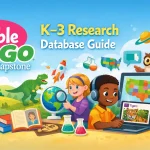Online learning has brought about a change in the field of education by providing flexibility and convenience to learners; however, the issue of accessibility still poses a hurdle for many people. Section 508 compliance ensures that digital materials are accessible to everyone, including those with disabilities.
Designing courses that adhere to these guidelines expands the audience and promotes an environment where all learners feel included. This article delves into ways educators and creators of content can produce eLearning modules compliant with Section 508 requirements.
Exploring Section 508 Accessibility Requirements
Section 508 of the Rehabilitation Act requires electronic information technology to be accessible to people with disabilities. Many educational institutions follow this standard, even though federal agencies are also required to be 508 compliant, ensuring content is easily seen and interacted with by all users.
Essential Components for Creating User E-Learning Materials
E-learning content easily caters to a variety of needs by considering features like compatibility with screen readers and keyboard navigation, as well as providing text alternatives for non-text elements such as images or videos. This is done without compromising on quality and understanding for individuals who are hearing impaired or require screen reader assistance.
Designing for Visual Impairments
Design is really important for making things accessible to everyone. Making sure there’s a difference in color between the text and background can make it easier for people with vision problems to read it better. Also, not relying too much on colors to give information can be helpful for those who are color blind. Having options to change the size of the text can let people adjust it to what works for them and improve their learning experience.
Making Audio Accessible to All Users
It’s important for all types of learners to have access to content that suits their needs. Captions play a role in videos, and transcripts offer an alternative to files. These resources help not only those with hearing impairments but also individuals studying in noisy surroundings. Adding descriptions to video content goes a step further in supporting impaired individuals by explaining visual aspects.
Read Also: Innovative Mailers: Strategies, Ideas, and Brilliant Examples
Making It Easier to Find Your Way Around
Clear and easy-to-follow navigation improves accessibility, while an organized layout and consistent design help users navigate the course smoothly and effortlessly. Keyboard navigation allows individuals who cannot use a mouse to engage with the content, and offering precise instructions on how to navigate the course reduces confusion and enhances user satisfaction.
Using Multimedia Resources
Multimedia features bring depth to e-learning courses but can be challenging for accessibility reasons. It’s vital to make them work well with tech tools like screen readers and keyboards by choosing HTML over Flash for videos and adding descriptions for images and diagrams to support those who rely on screen readers.
Assessing and Reviewing Accessibility
Testing plays a role in developing courses that meet compliance standards. In the testing phase, a combination of automated tools and manual testing is utilized to pinpoint accessibility issues accurately, including individuals with disabilities, and to gain perspectives on improvements needed for ongoing compliance as standards continue to evolve over time.
Creating an Atmosphere for Learning Initiatives
Compliance goes beyond this side of things. Fostering inclusivity means taking into account learning styles and requirements. Offer content delivery formats to cater to preferences. Encourage learners to give feedback for enhancements in accessibility and inclusivity across courses.
Benefits of 508 Compliant E-Learning
There are advantages to compliance measures in place for courses that cater to a wide range of audiences and prioritize inclusivity by ensuring accessibility for individuals with disabilities. This boosts brand image and showcases a dedication to diversity and equity in educational settings. In addition to this, user-friendly 508-compliant courses tend to offer a learning experience for all learners by placing a strong emphasis on clear communication and ease of use.
Closing Thoughts
Developing e-learning courses that comply with 508 standards is crucial to promote inclusivity and accessibility for all learners. The key lies in grasping the rules of compliance and incorporating methods to create courses that meet the needs of a range of individuals. Ensuring accessibility doesn’t just expand the audience; it also enhances the learning journey for everyone. Adopting these guidelines showcases a dedication to offering chances and supporting each student within the realm.








